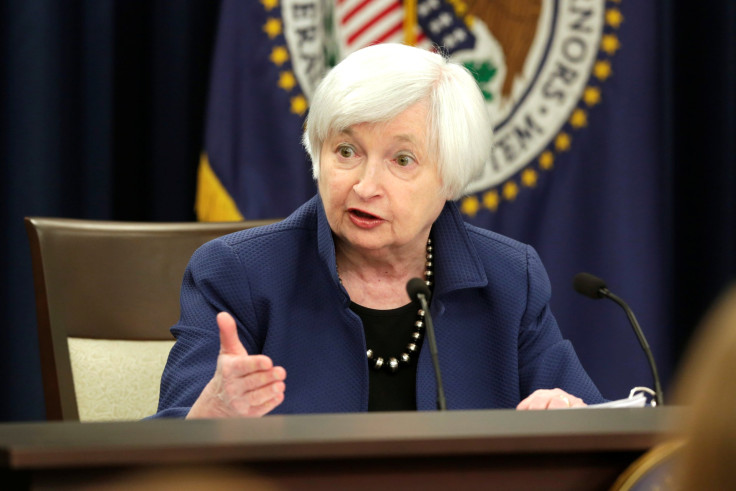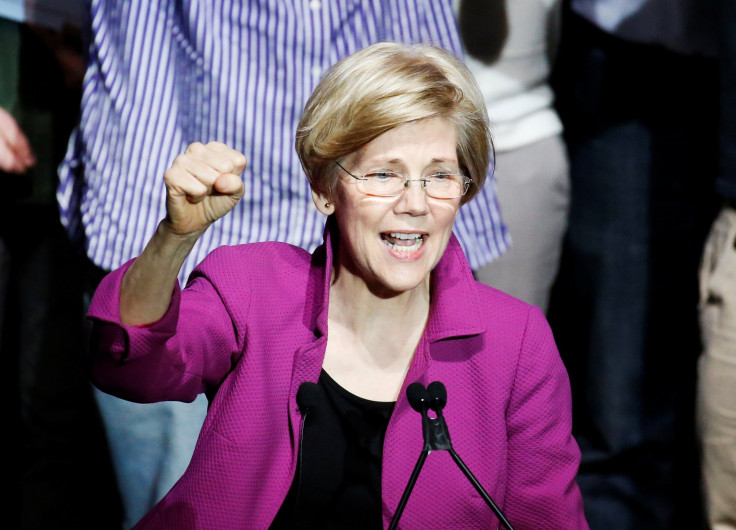Can Students Pay Off Their Loans? Delinquency On College Debt Soars Above That Of Credit Cards, Mortgages

After increasing for 11 straight quarters, aggregate household debt toppled the previous peak in 2008, reaching a total of $12.73 trillion in the first three months of 2017, according to a quarterly report released Wednesday by the Federal Reserve Bank of New York. That total is 14 percent above the valley formed by the drop in household debt that followed the Great Recession, the result of a decrease in borrowing in the wake of the credit collapse.
That’s not necessarily a bad thing, as the New York Times noted soon after the Fed report's release. It signifies consumers’ greater access to credit, a harbinger of healthy economic growth and activity. But the report also harbored a real cause for concern, specifically for millennials. While aggregate student loan debt only made up 11 percent of the total — compared to mortgages, with 68 percent of household debt — the average delinquency rate for student loans has shot above all other forms of debt in recent years, and stayed there, according to the Fed report.
Read: Who Pays For Millennials’ College Degrees? Not Their Parents, Especially If They’re Women
The rise in aggregate mortgage loans may represent a comeback for the housing market, as that delinquency rate has plummeted to below 4 percent from its 2009 peak of over 12 percent. For serious delinquencies, or those of at least 90 days, the rate is closer to 1 percent, the Fed found.
Student loans, by contrast, continued a dramatic rise in delinquencies that began about a dozen years earlier, with the rate of missed payments lingering around 10 percent today, up from around 8 percent in 2004. The rate of student loan delinquencies longer than 90 days has come close to 10 percent as well, up from under 6 percent in 2004. In terms of delinquency rates, the student debt category was followed by auto loans, with below 8 percent, and credit cards, with about 6 percent.
There is a litany of reasons for the disparity, according to Melinda Kay Lewis, an associate professor of practice at the University of Kansas’ School of Social Welfare. For starters, she said, the average financial profile of the student borrower makes that type of debt “a very different animal” from, say, mortgage debt, owed by Americans who are generally older and more financially stable. Buying a house, she added, might appear as less imperative than buying the upward mobility that colleges are purported to provide.
“For many students, it’s either no student loan financing or no school at all,” Lewis said. “People are really caught — they know that they need higher education to advance economically, but they have little ways to pay.”
Read: Why Millennials Will Never Retire
Student debt stood at a staggering nearly $1.44 trillion as of the first quarter, and the total — along with the delinquency rates noted in the Fed report — is bound to swell further.
Much of the Fed’s response to the economic fallout of the Great Recession involved lowering its policy interest rate, the federal funds rate, which gave borrowers some relief by pushing interest rates on various forms of debt to follow suit. But to have a proper response to the next financial crisis, whenever it may be, the Fed needs to move its policy rate back up to what Fed Chair Janet Yellen often refers to as a “neutral” level of up to 3 percent, up from its current bandwidth of between 0.75 and 1 percent. (The central bank dropped the federal funds rate to nearly zero from above 5 percent in the wake of the recession, and has been raising it in 0.25-percent increments since December 2015.)
Students with fixed interest rates or federal student loans taken out prior to 2006 have little to worry about, but the same can’t be said for other student borrowers.
Yellen is expected to announce another increase in the rate at the conclusion of its monetary policy-making body’s next meeting, on June 14, after she said in a press conference that the Fed would delay a hike at its previous meeting in May.

Seeking to mitigate the issue ahead of the next Fed meeting, Sen. Elizabeth Warren (D-Mass.) reintroduced a bill Wednesday that would permit student loan borrowers to refinance at current federal loan interest rates.
“With interest rates scheduled to rise again this summer,” a press release announcing the measure noted, “the urgency for Congress to address the student debt crisis and to allow borrowers to access today's lower rates is stronger than ever.”
While it’s garnered widespread Democratic support, the bill’s previous iterations have fielded criticism for leaving out distressed borrowers, who likely wouldn’t qualify for refinancing, and forcing borrowers to pay a 0.5 percent fee that would come with a refinance.

For Lewis, the associate professor, a better answer would be a full transformation of how students pay for college, rather than smaller, patchwork remedies that end up leaving many students behind and don’t address the root of the problem.
More scrutiny and awareness of the risks involved with for-profit colleges — which account for a disproportionate amount of student debt — earlier, “front-end” investing in kids’ educations and a revamp in public funding of public colleges would be a good start, Lewis said.
Read: For-Profit College Stocks Rise Amid Regulation Delay
After all, delinquency rates, she noted, are often higher for students with smaller loans who didn’t attend elite, big-name institutions, and are therefore seeing little return on their investment.
“We have students from community colleges who can’t pay off their debt,” Lewis said, adding that the ramifications of college unaffordability for the broader economy could be detrimental. “One of my greatest fears with the student debt issue is that students will look around them and decide that the risk is too much.”
© Copyright IBTimes 2024. All rights reserved.












